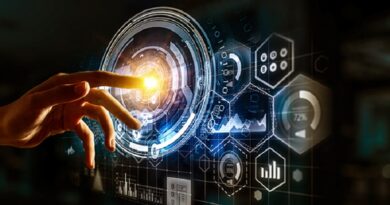Conventional Computers Can Learn To Solve Difficult Physics and Chemistry Quantum Problems
Conventional Computers Can Learn To Solve Difficult Physics and Chemistry Quantum Problems :
It has been demonstrated by physicists that traditional machine learning algorithms can enhance predictions for quantum materials.
There is a lot of talk surrounding quantum computers, and for good reason. The cutting-edge computers are built to replicate minuscule occurrences in nature. This implies that they have the ability to accelerate the development of novel materials, such as medications and ecologically friendly compounds, and to get a deeper understanding of the quantum domain. However, experts estimate that it will be at least another ten years before actual quantum computers become widely accessible. What should researchers do while waiting?
A recent study highlights the use of machine learning methods on classical computers to forecast quantum systems and assist researchers in resolving some of the most challenging physics and chemical issues. Although this idea has been put forth before, the new paper is the first to mathematically demonstrate that the strategy is effective in solving issues that cannot be solved by conventional methods. The study, which was led by Caltech, was released on September 23 in the magazine Science.
Lead author Hsin-Yuan (Robert) Huang states that “Quantum computers are appropriate for many types of physics and materials science challenges.” He is a graduate student studying with John Preskill, the Allen V. C. Davis and Lenabelle Davis Leadership Chair of the Institute for Quantum Science and Technology and the Richard P. Feynman Professor of Theoretical Physics (IQIM). “However, we’re not quite there yet, and we were pleasantly surprised to discover that traditional machine learning techniques may be employed in the interim. This essay’s main goal is to demonstrate what can be learned about the physical world by humans.
The physical universe transforms into an incredibly complex environment at microscopic scales, where quantum physics laws govern everything. Particles in this space can coexist in two states simultaneously or in a superposition of states. Entanglement, a phenomena in which particles are connected or correlated without even being in contact with one another, can also result from a superposition of states. These odd states and linkages, which are present in both natural and artificial materials, are particularly challenging to quantitatively define.
“Predicting the low-energy state of a material is very hard,” says Huang. “There are huge numbers of atoms, and they are superimposed and entangled. You can’t write down an equation to describe it all.”
The new research serves as the first mathematical proof that the gap between our world and the quantum one can be filled by conventional machine learning. A sort of computer programme called machine learning, which is regarded as a branch of artificial intelligence, imitates the way the human brain learns from data.
“We are classical beings living in a quantum world,” says Preskill. “Our brains and our computers are classical, and this limits our ability to interact with and understand the quantum reality.”
Although prior research has demonstrated that some quantum problems can be solved by machine learning models, these techniques often operate in ways that make it challenging for scientists to understand how the machines arrived at their solutions.
“Normally, when it comes to machine learning, you don’t know how the machine solved the problem. It’s a black box,” says Huang. “But now we’ve essentially figured out what’s happening in the box through our mathematical analysis and numerical simulations.” Huang and his colleagues did extensive numerical simulations in collaboration with the AWS Center for Quantum Computing at Caltech, which corroborated their theoretical results.
The new findings will aid in the classification and understanding of complex and exotic aspects of quantum matter.
“The worry was that people creating new quantum states in the lab might not be able to understand them,” Preskill explains. “But now we can obtain reasonable classical data to explain what’s going on. The classical machines don’t just give us an answer like an oracle but guide us toward a deeper understanding.”
Victor V. Albert, a co-author and former DuBridge Prize Postdoctoral Scholar at Caltech, who works for the National Institute of Standards and Technology, concurs. “The component of this study that excites me most is that we are getting closer to a tool that helps you comprehend the underlying phase of a quantum state without needing to know very much about that state beforehand,” the author says.
Of course, in the end, the scientists predict that quantum-based machine learning techniques will surpass conventional ones. Huang, Preskill, and their collaborators claim utilising Google’s Sycamore processor, a crude quantum computer, to show that quantum machine learning is better to conventional methods in a paper that will be published in Science on June 10, 2022.
“We are still at the very beginning of this field,” says Huang. “But we do know that quantum machine learning will eventually be the most efficient.”
Reference: “Provably efficient machine learning for quantum many-body problems” by Hsin-Yuan Huang, Richard Kueng, Giacomo Torlai, Victor V. Albert and John Preskill, 23 September 2022, Science.
For More IT Articles Click Here




